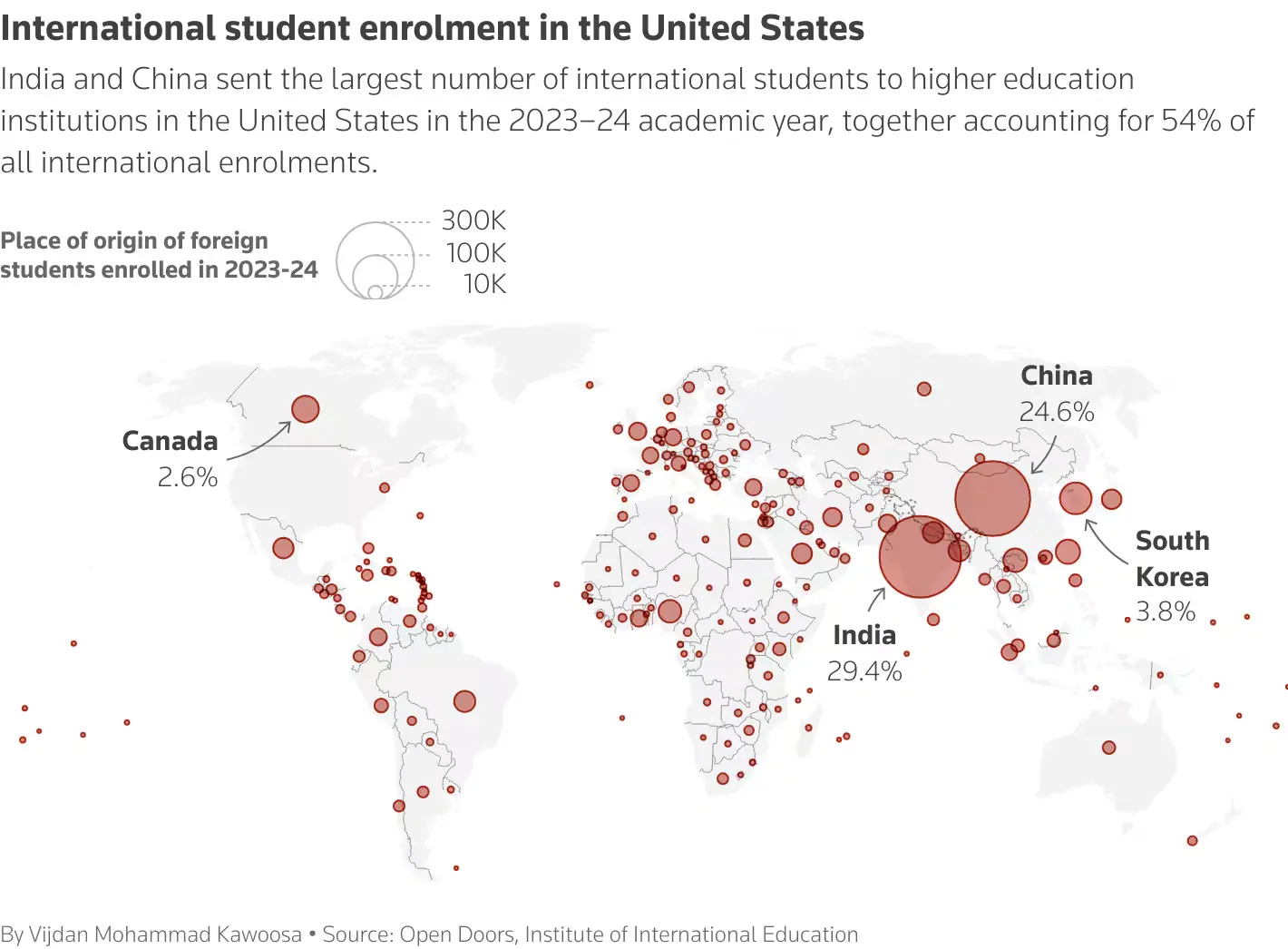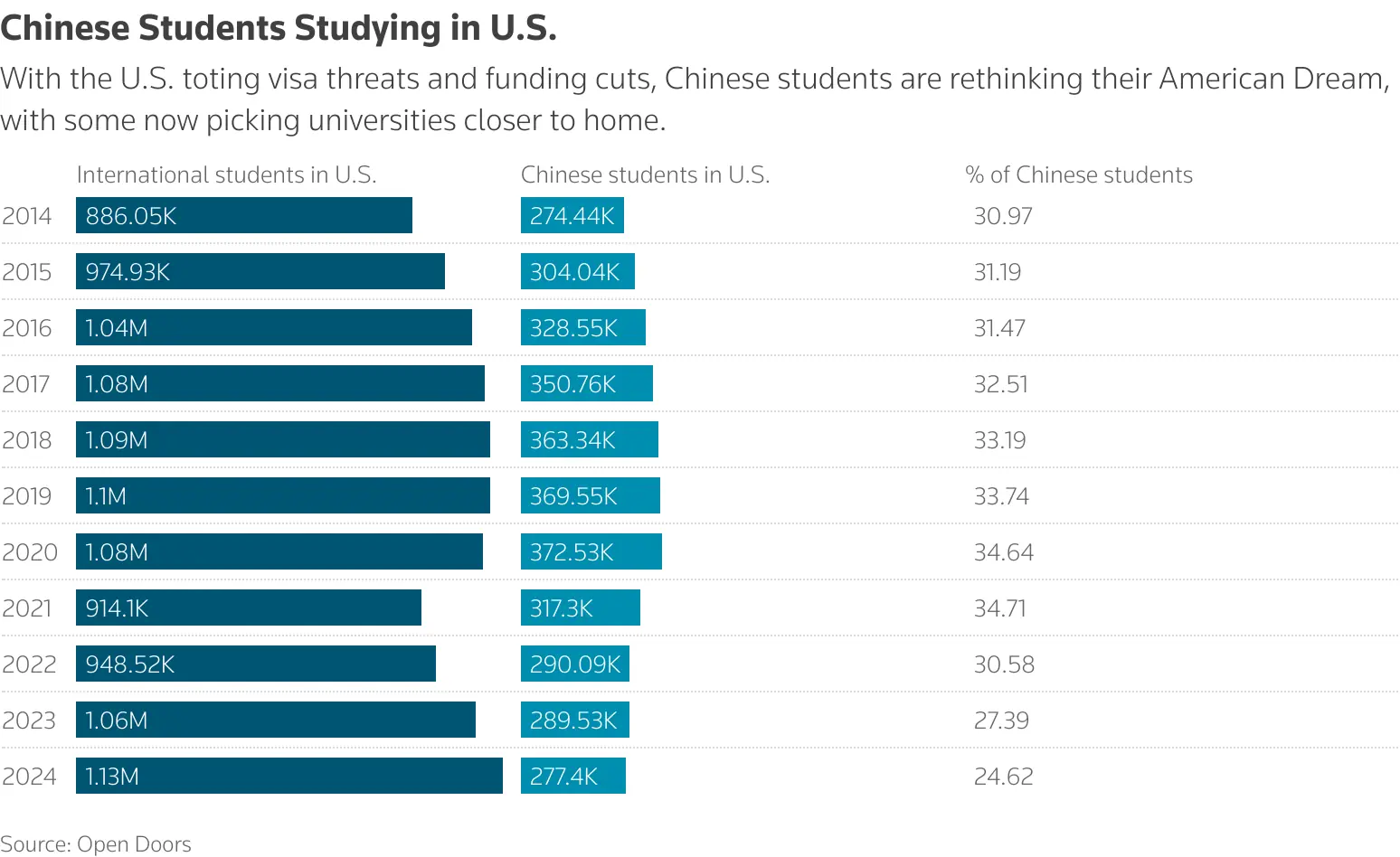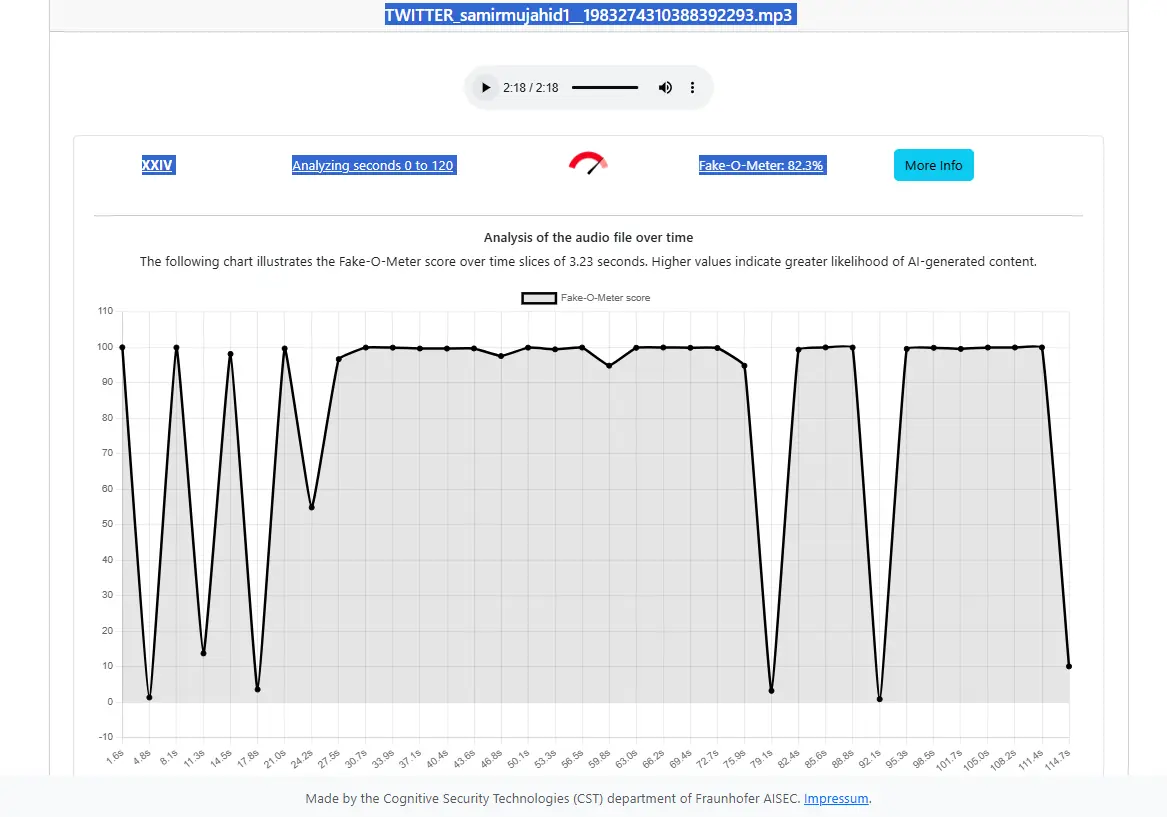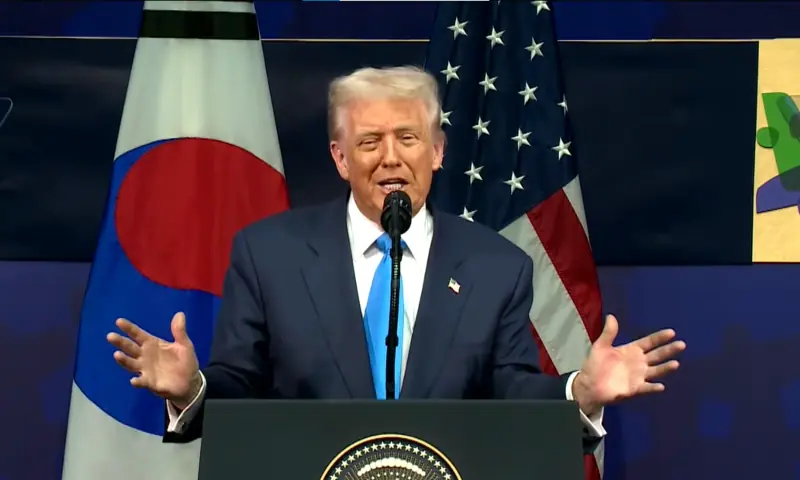Despite the collapse of relations between Beijing and Washington, Huang, a Shanghai resident, is determined for her daughter to complete her expensive education in the United States.
Even though both sides have spent much of this year locked in a fierce trade dispute, American schools and universities remain hugely popular with parents pursuing what they see as better opportunities and an international perspective for their children.
They will be among many who hope that the long-awaited meeting between Presidents Donald Trump and Xi Jinping in South Korea on Thursday – their first meeting since the former’s return to the White House – can pave the way for stabilizing ties.
“Although there is a lot of drama right now… this is only temporary,” Huang said. AFP. “This is something I firmly believe in.”
Her 17-year-old daughter has been enrolled in high school in the United States for three years and hopes to study computer science at a university there.
Trump’s mercurial nature and his “America First” policies have scared some of Huang’s friends, who are considering sending their children to Europe or Australia.
But for Huang, the benefits of an American education far outweigh the disadvantages.
“We believe that the United States is a country that can give our children more opportunities, and education is definitely more diverse,” said Huang, who did not give his full name for privacy reasons.
However, the price is high: Huang estimates that he currently pays more than $100,000 a year in education and living expenses.
The richest parents “aren’t worried”
Young Chinese have long been crucial to the bottom lines of American universities.
After Indians, they constituted the second-largest nationality of international students for the 2023-24 academic year, according to the Institute of International Education.

But Trump has introduced policies aimed both at curbing immigration and weakening universities, which he sees as a power base for the left.
US Secretary of State Marco Rubio said in May that Washington would “aggressively revoke visas for Chinese students.”
However, just a few months later, Trump said that the country was going to allow the “entry” of 600,000 Chinese students.
The uncertainty does not appear to have discouraged many Chinese parents, according to Godot Han, who works for a Beijing tutoring agency.
His wealthiest clients, in particular, “haven’t cared.”
“They’re not going to just read a single news article and then suddenly make changes” to long-held plans, he said.
Teachers at his school, part of a thriving domestic industry, prepare about 200 Chinese students each year for exams needed for admission to American universities.
An individual session costs between $112 and $210 an hour, and some students attend several a day.
Some parents worry about their children’s safety due to school shootings in the United States and the Trump administration’s policies.
But many have always “had that kind of American dream,” Han said. AFP.
Never a ‘honeymoon period’
The enduring appeal of American education is based on its “perceived quality and historical reputation,” said Dylan Loh of Singapore’s Nanyang Technological University.
“This reputation and prestige is long-standing and, despite the obvious difficulties, it still persists and will remain for a long time,” he said.
Another parent, Ping Jiaqi, said AFP that American universities could help foster “independent thinking” in his 17-year-old daughter, who studies at an international high school in eastern China’s Zhejiang province.
He attended summer school at Brown University last year and visited several other campuses in the United States, hoping to move there to attend college. His father expects his entire tertiary education to cost more than $400,000.
Ping, who runs an educational consultancy for Chinese students who want to study abroad, said the daily lives of his friends and students based in the United States “haven’t been much affected” by Trump.
“When I think about it, relations between the United States and China really haven’t been good at any point over the last decade,” he said.
“There was never really a honeymoon period.”








